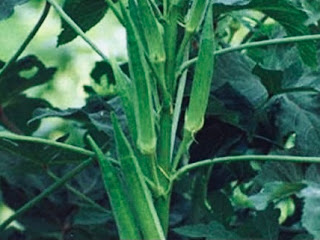But did you know that it can also be grown at home with putting my efforts and money on it? No need to worry about it now, as here in this blog, I will be presenting you the art of growing okras at home. So take a bowl of popcorn, and get ready to dive into an ocean of information about Okras.
PART 1 Planting the Seeds
1. Take a large 2-3 feet wide and 1.5 feet tall pot, and put 50% Garden Soil, 30% Vermicompost and 20% Cocopeat, and make sure the pH level is between 6.5-7.
2. Make a few 1/2 inch deep holes at 4-5 inch gap, and sow 2-3 Okra seeds in it. Then, cover the soil with the same potting mix, and put the pot in full sun.
3. Water the seeds regularly and frequently, but do not over water it.
4. After a few days, small okra plants will start growing from ir. Thin out the seedlings if they are too close to each other, as this will ensure that all the seedlings are getting proper space and nutritious.
PART 2 Harvesting the Okras
1. Fertilise the Okras with Nitrogen rich fertiliser like Vermicompost or NPK. And spray Neem oil to protect the plants from pests.
2. Transplant the seedlings individually to a much bigger pot (if needed).
3. Done! After about 8 weeks of planting, fruits will start growing from it.
That’s it!
Thank you for reading and sharing my blogs.
Please do share your suggestions below 👇






0 Comments